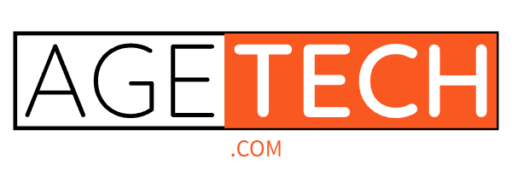

What are self-managed organizations, and how could they work in senior housing? This was the subject of a three-way discussion between Aging2.0 co-founder Stephen Johnston, President of Amica (a member of the Aging2.0 Collective) Bob Kallonen and author and organizational theorist Doug Kirkpatrick. Doug was part of the founding team at Morning Star, which has been the subject of many innovation case studies due to its pioneering of a self-managed approach and has grown to be the global leader in tomato processing. A self-management approach seems likely to offer a number of solutions to the staff challenges faced by senior housing organizations, and is already has a successful model in home care. As such, it’s worth exploring further and will be the subject of a forthcoming Collective workshop.
Note: excerpts from the conversation are included below, the full conversation is here.
The long shadow of ‘scientific’ management
At the start of the twentieth century, Frederick Winslow Taylor was looking for a solution to tackle ‘soldiering’ – the low productivity of workers who’d recently moved from the fields to the factories. Taylor proposed a new deal: in exchange for higher wages, the workers would do very precise, discrete tasks. They were small cogs in a highly engineered and precise machinery of the firm. As such, the first operation in the new paradigm of ‘scientific management’ was to lobotomize workers. This was the context for Henry Ford’s quote, “Why is it every time I ask for a pair of hands, they come with a brain attached?”. Managers were born, charged with doing the thinking while the workers worked.
The first operation in the new paradigm of scientific management was to lobotomize workers. This was the context for Henry Ford’s quote, “Why is it every time I ask for a pair of hands, they come with a brain attached?”.
Arguably, not a lot has changed since. Organisations, in particular large bureaucracies, are often viewed as machines – which works well for factories and process-heavy organisations, but has limitations where the people, not widgets, are involved. A more accurate metaphor for today’s world is an emergent, complex, living organism. As technology and AI increasingly take over more tasks, the future of work has to lie not in being better than the best machines, but being better at being human.
Self-management treats workers as humans, not machines
Humans aren’t machines and the machinery of modern business was more suited to the battlefield and management of armies (and then the factory floor) than today’s modern business setting. Today value is created by people and services, and rapid evolution and innovation is harder to find than scale efficiencies. Moreover, self-management is, according to Kirkpatrick, “a check on the arbitrary and capricious use of power”. As power increases, “then etiquette and manners decline as managers acquire power”. This is why we have checks and balances, such as independent judiciaries and press. Power dynamics are let loose inside private organizations.
The two founding principles of self-management
The version of self-management that Kirkpatrick has practiced for 20+ years is based on two simple principles: first, don’t use force and second, keep your commitments. These are the most fundamental principles of human interactions, and the foundation of most civil and criminal codes. According to Kirkpatrick, as these get integrated into people’s DNA, everything else flows from there. These have been the principles driving the success of Morning Star for the past 31 years and continue to guide the company.
A common thread among many innovative organisations
Humanocracy highlights some organisations that have delivered transformational performance (including Morning Star). One of the most remarkable stories is with Haier, the Chinese appliance manufacturer, which is featured in a Fordcastle article here. Other successful companies pursuing version of this model include materials maker Gore, Swedish bank Handelsbanken, and of particular relevance for the care sector, Buurtzorg, which continues to raise the bar for efficiency and effectiveness (see below).
Differences to business-as-usual
Self-management is business being done very differently:
-
Moves decision-making to the front lines. Decision making is taken by the individual or the small team working on the problem, in-line with direction from the company’s mission and that individuals own responsibilities. If a decision impacts others, it’s up to the individual to run it past them before making it.
-
Power shifts from manager to customer. Self-managed organisations make employees directly responsible to the customer rather than a line manager. As Gary Hamel and Michele Zanini write in the HBR article that was the precursor to Humanocracy, Haier tells their employees that they are responsible to customers directly.
-
Quality control is everywhere. A natural question applied to self-management is, who will check quality if you don’t have a boss? The reality is that the company mission is your boss and the results of what you do are more transparent – to your co-workers, to customers and to the bottom line.
-
Allows employees to bringing their ‘whole self’ to work. People often use more of their skills driving to work (or managing their children) than in their job. A self-managed approach taps into the depth of skills – the ‘human-ness’ – that we all possess.
-
Compensation on skills and value not political capital. Compensation is now based on skills and customer value rather than the relationship with the boss. Similarly, compensation discussions will be more about the team and organization performance.
“Ask a cross section of Morning Star associates to name their most valuable colleagues, and you’ll find the same names popping up over and over again. There’s little doubt about who is indispensable and who is not. Morning Star’s organization isn’t flat – some associates add more value and get paid more than others – but authority is the product of expertise rather than positional power, and varies from issue to issue.” (Source: Humanocracy p. 154)
-
Personalized career progression. In a self-managed organisation the pathway to growth is about people deciding on their growth pathway and convincing people to mentor them and help them grow.
Senior care staffing is in need of radical innovation
Kallonen has a story where he was in an industry conference and asked the assembled audience of executives in the senior care space, “Who would be excited if their child announced they wanted to go into caregiving as a profession?”. Nobody raised their hand. That illustrates the multifaceted challenges facing the direct care workforce – a shortage of workers, low wages, high turnover, poor working conditions, low job satisfaction, lack of professional progression and poor job image – to name but a few. Could we instead make being a care worker a “hot job” with a career progression, one that executives would be delighted for their children to do?
Amica’s experience: A trial by fire
Amica’s experiments in self-management were accelerated by the pandemic. Lock downs, fast-changing policies and the need to rely more on digital tools happened overnight. “We learned as much in a 24 hour cycle as we would in three months or a year,” says Kallonen. Given that staff weren’t moving between sites during the pandemic, there might have been more information siloes at dangerous time.
One of the themes that’s come up in every fireside chat I’ve heard about is, we had no idea how much we could rely on each other. And we don’t want to go back to the way we were. I think in some ways, the pandemic may provide a jumping off point for us, it’s almost a launching pad, to be able to have these broader discussions about being open to accepting higher levels of freedom. and higher levels of accountability or responsibility that go with it as an individual – Bob Kallonen
Why it makes sense as a model for senior housing.
-
A natural fit for a relationship-driven business. Kallonen notes that it’s not the qualifications that matter but the levels of skill and empathy, and these are highly personalized. The “lifeblood within residences is the interactions within people”, and as he has confidence in delegating decisions where possible to those on the front lines.
The lifeblood within residences is the interactions within people.
-
Potential for improved quality outcomes. There’s a move from ‘that’s not my job’ to it’s anyone’s responsibility who sees it’. There is still a strong medical culture and bias of safety and risk minimization in senior care, though some regulators are focusing on reduction of harms (output-based) versus enforcement of ‘legs and regs’ (input based). This works well with self-management. Kallonen noted that military aviation has a poorer safety track record than civilian aviation due to the reluctancy in military aviation to talk about mistakes, weaknesses and failures.
Military aviation has a poorer safety track record for comparable flying conditions, than civilians due to the reluctancy in military aviation to talk about mistakes, weaknesses and failure
-
Happier staff. Kallonen notes that employees do entrepreneurial things in their non-work lives – they make big life decisions and carry out complicated duties. “If we can create environments where people can be more how they really are, that’s a better vision for entrepreneurship, than the “Wolf of Wall Street” pastiche.” Kallonen continues: “My sense is that most of humanity would love to be able to do more of what they love to do every day – use their strengths, make a difference, be part of something bigger than themselves, know that others are depending on them, know that their contribution is tied to their effective efforts with others.”
I suppose I’m capable of getting out of someone else 50% of what they could deliver. The reason I say that is for the second 50% there is no policy manual that could force it from someone – they have to volunteer it from the heart.
-
Harness the skills and resources of the residents, not just staff. The first Aging2.0 event in 2012 was held at a Brookdale building and the team was blown away at the experience, skillsets and engagement of the residents who connected with the startup pitches and provided feedback. Unfortunately this level of engagement is rare. Kallonen noted how they’re coming up with new metrics for resident engagement – they decided one day that in addition to having benchmarks, standards and auditing for financial risk they should introduce an outsider to audit ‘resident risk’. The external person identifies risks but also looks at processes and sees whether they’re fit for purpose. A model that allows everyone – including residents – to contribute has got to be attractive.
We’re playing with the idea of changing team structures in a new residence we are opening next year to be organized around the customer in neighborhoods – so a team that does 90% of what needs to be done for residents in an Assisted Living neighborhood, for example, has no title based roles. Instead of a person ‘doing laundry’ in a commercial laundry in the basement of the building, the AL team has the needed training and access to the equipment 2 or 3 times a week – and the team figures out who does the laundry. Who knows, they might even involve residents from their neighborhood?
-
Getting started
This is a new and emergent topic, and given the vulnerability of some older residents, fundamental changes will need to be well thought through.
- Start with the culture. Each organisation will have their own principles and values and these form and reinforce the culture. Having a coherent set of values and principles that all employees – and residents – know and internalise, is a good starting point.
- Know that self-management already works in home care. One of the most talked-about and widely emulated senior care business is Buurtzorg, one of the early champions of this way of doing business. This article shows their approach and impact.
- Step-by-step rather than all-at-once. Think of this as a long-term campaign, and one in which culture change is as important as any. Leaders need to see team members as leaders themselves – who could grow and develop themselves.
- Plan for the rule of thirds. Kallonen noted that in his experience, one third of their leaders will embrace this type of change as noble and exciting, one third will be interested but sceptical and one third will be adamantly opposed. And that’s okay. Start with the first 2/3 first.
- Seek expert help. A number of books and articles below provide step-by-step guides, and consultants like Kirkpatrick can help companies plan and execute a transition. (If there’s interest, we could create a group of companies in the Collective doing this.)
Kallonen notes there are lots of reasons to say ‘no’ but playing it safe is no longer an option. As Amy Edmondson puts it in The Fearless Organization: “Self-protection remains a hollow victory compared to the fulfillment that comes from actively serving an inspiring purpose and being part of a team that’s able to accomplish an ambitious goal. It’s the difference between playing not to lose and playing to win. […] When you make up your mind to play to win, the rules change. Yes, you might fall flat on your face publicly sometimes. But you also will become more able to contribute to something that makes a difference in the world.”
These issues cannot be addressed by one company alone – it will require a concerted and coordinated effort by innovation-minded collaborators. That’s why we’re pulling together a working group of experts, practitioners and enthusiastic amateurs in the space. If you’d like to follow along or be actively involved as this project develops in the coming weeks, please let us know.
- Note: Full audio of the conversation between Bob, Doug and Stephen is here
Further reading:
Internal: Intro deck to the conversation here.
About the Author
Stephen Johnston MBA is a co-founder of Aging2.0 a global innovation platform for aging and senior care, founder of Fordcastle, an innovation consultancy and a member of the Future Agenda, the world’s largest open foresight initiative. Stephen serves on the board of Music and Memory a New York 501c3 nonprofit focused on improving the quality of life for older people, He is co-author of Growth Champions (Wiley, 2012), a book about sustainable corporate growth. He has an MA in Economics from Cambridge University and an MBA from Harvard Business School where he was a Fulbright Scholar.

